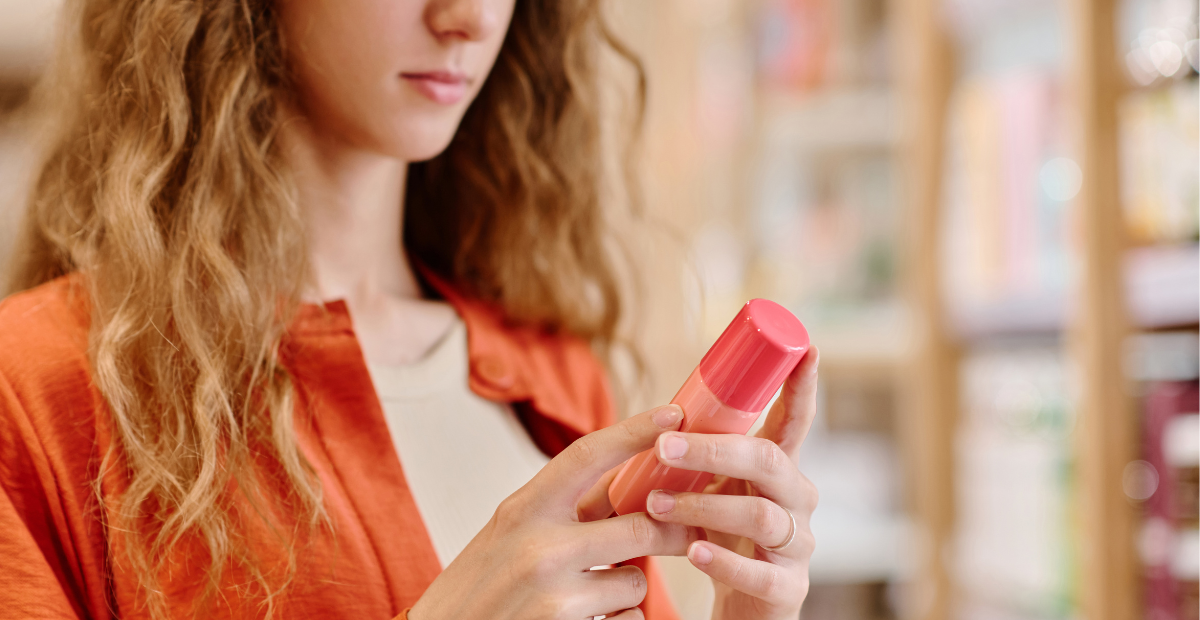If you’ve ever flipped over a bottle of body wash, shampoo, lotion, or even lip balm and felt totally confused by the ingredient list — you’re not alone. Between long chemical names and buzzwords like “clean” or “natural,” it’s easy to feel lost.
But here’s the good news: once you know what different ingredient categories do, it becomes so much easier to choose products that are gentle, effective, and safe for your family.
Here’s a simple breakdown of common ingredient groups — what they do, which ones to avoid, and what to look for instead.
And if you’d like a little extra help, we’ve got you covered! Download our printable cheat sheet with over 150 sus ingredients we avoid at Gryme (and at our house)
1. Surfactants (The Cleansing Agents)
Surfactants are the ingredients that do the heavy lifting in body washes, shampoos, and facial cleansers. They break up dirt and oil and help rinse everything away. But some are super harsh and drying, while others are gentle and skin-friendly.
Surfactants to Avoid:
Two you’ve likely heard of:
- Sodium Lauryl Sulfate (SLS) – A strong synthetic cleansing agent that creates lots of foam but is known to be a skin irritant and can cause allergic reactions, which can manifest as skin rashes, hives, or other symptoms.
- Sodium Laureth Sulfate (SLES) – Similar to SLS but milder, often used in "gentle" formulas. This is still a sulfate, so if you’re looking for sulfate-free products or have sensitive skin, it’s best to avoid this one, too.
Two more to watch out for:
- Sodium C14-16 Olefin Sulfonate – Despite the low Environmental Working Group (EWG) hazard rating, this inexpensive synthetic surfactant is known to be harsh and sensitizing, and can leave the skin and scalp feeling dry and irritated, especially when it’s the primary surfactant. As a powerful surfactant, it can also disrupt the skin barrier, leading to increased water loss, dryness and, in some cases, the onset of acne.
- Cocamidopropyl Betaine – While derived from coconut, studies show it can be irritating and sensitizing for some people, especially kids with more delicate skin. In fact, in 2004, the American Contact Dermatitis Society designated cocamidopropyl betaine as the "Allergen of the Year" due to increasing reports of sensitization and allergic contact dermatitis.
➡ Fun fact: These two ingredients are often paired together in formulas that are designed to be cheap and foamy but aren’t kind to skin. We skip them.
Gentle Sulfate-Free Surfactants to Look For:
- Sodium Cocoyl Isethionate – Sulfate-free, mild, and leaves skin feeling soft.
- Decyl Glucoside – Super gentle and safe for sensitive skin.
- Disodium 2-Sulfolaurate and Sodium Methyl 2-Sulfolaurate – Mild, biodegradable surfactants used in gentle cleansing products for sensitive skin.
- Sodium Lauroyl Methyl Isethionate – Gentle, coconut-derived, and great for creating a creamy, luxurious lather without drying skin.
- Cocamidopropyl Hydroxysultaine – A mild alternative to cocamidopropyl betaine + helps boost foam without irritation.
- Disodium Cocoyl Glutamate – A gentle surfactant derived from coconut and sugar that cleans without drying.
2. Ingredients for Lather (Because We All Love Suds!)
Foam feels nice, and for a long time, brands relied on certain synthetic foaming agents to deliver big, bubbly lather — even in baby shampoos. But just because something foams well doesn’t mean it’s good for skin. Some of these older ingredients were found to be irritating or potentially harmful over time.
Lather-Boosting Ingredients to Avoid:
- Cocamide DEA — Once a popular thickener and foam booster (dating back to the 1960s), but later found to be a skin irritant and even potentially carcinogenic in high doses. It’s now on California’s Prop 65 list.
- Cocamide MEA — Used as a replacement for DEA, but confusion around the names caused many brands to move away from this ingredient too.
Gentle Lather Ingredients to Look For:
- Cocoyl Glucoside — A plant-based ingredient that helps boost foam gently.
- Lauryl Glucoside — Another mild, plant-derived lathering agent.
At Gryme, our Body + Face Wash's rich, creamy lather comes from our mild combination of surfactants: Cocamidopropyl Hydroxysultaine, Sodium Methyl 2-Sulfolaurate, Disodium 2-Sulfolaurate and Sodium Lauroyl Methyl Isethionate. We love these ingredients because they deliver the most luxurious foam without drying, while being extremely gentle for sensitive skin. It’s really challenging to get a good foam from “clean” products, so we’re really proud we could create a great lather without irritation.
3. Hydrating Ingredients (What Actually Moisturizes, and What Just Sits There)
We all want products that leave skin or hair feeling soft and hydrated — not tight, greasy, or coated. But here’s the thing: not all moisturizing ingredients are created equal. Some actually help your skin or hair retain moisture, and others (often petroleum-based) just sit on top and can clog, coat, or block.
Hydrating Ingredients to Look For (these actually nourish):
- Glycerin – A plant-based humectant that draws moisture into the skin.
- Aloe Vera – Soothes and hydrates without feeling heavy or sticky.
- Coconut Water - Lightweight hydration that feels refreshing on skin.
- Sodium PCA – A naturally occurring molecule that helps skin hold onto water.
- Panthenol (Provitamin B5) – A soothing, hydrating ingredient for both skin and hair.
- Jojoba Oil – Lightweight and closest to the skin’s natural oils.
- Squalane (plant-derived) – Weightless hydration for both skin and hair.
- Shea Butter & Cocoa Butter – Rich, nourishing emollients (better for creams and balms).
Petroleum-Based Moisturizers We Avoid:
Petroleum-based moisturizers are often used because they’re cheap and create a slick, “moisturized” feeling on the surface. But they don’t actually nourish the skin or hair — they just coat it. Over time, they can clog pores, trap bacteria, and create buildup.
- PEGs (Polyethylene Glycols) – Used in creams and lotions as thickeners or emulsifiers; petroleum-derived and can carry impurities. PEGs include any ingredient with PEG in its name, like: PEG-40 Hydrogenated Castor Oil, PEG-7 Glyceryl Cocoate, PEG-100 Stearate.
- Propylene Glycol / Butylene Glycol – Common solvents and humectants derived from petroleum. Some people are fine with them; others prefer to skip.
- Mineral Oil / Paraffinum Liquidum – A petroleum byproduct that sits on the skin and can clog pores.
- Petrolatum (Petroleum Jelly) – Forms a barrier but doesn’t let skin breathe. A lot of us may have used Petroleum Jelly or Aquaphor on our babies
- Isoparaffin / Isohexadecane / C13-14 Isoparaffin – Synthetic hydrocarbons that add slip but don’t truly hydrate.
👉 What about Vaseline and Aquaphor? Aren’t those doctor-recommended (especially for lips and dry skin)?
I know this might surprise some people — especially if you’ve got a tub of Vaseline or Aquaphor sitting in your bathroom (I did, too!). Lots of doctors recommend them for super dry skin or chapped lips because they seal in moisture and protect the skin barrier.
But here’s why we skip petroleum-based ingredients in everyday personal care products:
- They coat the skin but don’t actually nourish or repair it. They’re great at trapping moisture, but they’re not adding hydration or helping the skin heal.
- They can trap bacteria and sweat, which isn’t ideal for lips or sensitive areas prone to breakouts.
- Over time, relying on petroleum-based products can leave skin feeling like it always needs more — because you’re sealing it, not balancing it.
- Petroleum is not a renewable resource and doesn’t fit into a clean, plant-based ingredient philosophy.
- For lips specifically, there are safer, more skin-loving plant-based alternatives that soften and hydrate while allowing the skin to breathe and repair itself naturally.
That’s why we formulated Gryme’s lip balm without petroleum or mineral oil — instead, we use plant-based butters and oils (like shea butter and jojoba oil) that actually feed and replenish the skin, not just cover it up.
4. Emulsifiers (Keeping Oil + Water Together)
Emulsifiers help create a smooth, even texture in creams, lotions, and washes. Some are skin-friendly and mild, others... not so much.
Gentle Emulsifiers to Look For:
- Glyceryl Stearate – Plant-derived and helps make products feel smooth.
- Cetearyl Alcohol – A fatty alcohol (not the drying kind!) that softens and thickens.
- Lecithin – A natural emulsifier from soy or sunflower oil.
Emulsifiers to Avoid:
- PEGs (Polyethylene Glycols) – Petroleum-based compounds that can contain impurities. We never use PEGs at Gryme.
5. Silicones (The Slip-and-Slide Ingredients That Don’t Actually Moisturize)
Silicones are those ingredients that make lotions, conditioners, serums, sunscreens and deodorants feel super smooth and silky. You’ll spot them on labels with names like dimethicone, cyclopentasiloxane, or amodimethicone (look for any ingredients ending in -cone, -siloxane, or -conol).
And while they’re not dangerous, they’re kind of like a Band-Aid for your skin or hair.
Here’s what silicones do:
- They create a smooth, silky feel.
- In hair products, they help detangle and make hair feel soft and glossy.
- In skincare, they give that “blurred,” velvety finish and help seal in moisture that’s already there. I like to think of them as spackle that fill up fine lines and make skin look smoother and younger - clearly not a tactic needed in kids’ skincare.
- In deodorants, they create a smooth application without tugging on skin.
But here’s the catch:
- They don’t hydrate or nourish. They just sit on top and make things feel nice.
- In hair care, they can build up over time, making hair feel heavy or coated if you’re not using clarifying products. They’re also occlusive and can make hair dryer.
- In skincare, they can mask dehydration rather than helping to fix it. Also, because the sit on skin, they can cause breakouts and acne.
At Gryme, we skip silicones because we’d rather use ingredients that actually support skin and hair health — like glycerin, aloe, and shea butter. These ingredients sink in, nourish, and do real work, without leaving behind buildup or that coated feeling.
6. Fragrance (The Trickiest Ingredient on the Label)
Fragrance is one of those categories that seems simple but can actually be super complicated — and honestly, a little sneaky. Whether it’s listed as “fragrance,” “parfum,” or even “natural fragrance,” it’s often a black box of ingredients that we, as parents and consumers, don’t get to see.
Here’s the problem:
- By law, fragrance formulations are protected as trade secrets, so brands (and definitely consumers) aren’t required to know exactly what’s in them.
- In fact, many brands themselves don’t even know what’s in their fragrance blends, because suppliers often keep that information secret — even from the manufacturers.
- That means when you see “fragrance” or “natural fragrance” on a label, it could contain dozens of chemicals or compounds, some of which could be allergens, irritants, or endocrine disruptors.
And yes, even natural fragrance isn’t always safer. Natural essential oils also can contain naturally occurring allergens or sensitizers. Just because it’s “from nature” doesn’t mean it’s good for delicate or sensitive skin — especially kids.
At Gryme, we don’t use synthetic or undisclosed fragrance blends, and we also avoid essential oils, which can be common allergens. Instead, we use food-grade natural plant extracts — like vanilla and coconut — that have gentle, naturally occurring scents without the harshness or sensitization risk of their essential oil counterparts. Plus, we don’t use any of the 128 known or suspected allergens on the EU’s restricted list. If it’s not safe and transparent, it’s not going in our products — period.
7. Preservatives (Necessary for Safety — But Not All Are Created Equal)
Preservatives are one of those things we sometimes wish we could avoid, but the truth is: if a product contains water (like a body wash, shampoo, or lotion), it needs a preservative. Otherwise, bacteria, mold, and yeast can grow — and nobody wants that going on skin or near eyes.
But here’s what matters:
- You want a broad-spectrum preservative — meaning one that protects against bacteria, mold, and yeast.
- You want it in the right amount: enough to keep the product safe, but not so much that it risks irritation.
- And you want to avoid the preservatives that are known to be harsh, sensitizing, or questionable.
Preservatives to Avoid (still surprisingly common):
- Parabens (Methylparaben, Propylparaben, etc.) – Linked to hormone disruption concerns and despite consumer demand for paraben-free products, they’re still shockingly used by leading brands like Cerave.
- BHT (Butylated Hydroxytoluene) — Used as a preservative and antioxidant, but flagged as a potential endocrine disruptor.
- MIT and CMIT (Methylisothiazolinone and Methylchloroisothiazolinone) — These are still in some personal care products but are extremely sensitizing and known to cause allergic reactions.
- Phenoxyethanol (in large amounts) – Considered safe in low concentrations, but excessive amounts can irritate.
- Formaldehyde releasers (DMDM Hydantoin, Imidazolidinyl Urea) – No thanks!
Gentle Preservatives to Look For:
- Sodium Benzoate – A mild preservative often used in combination with others.
- Gluconolactone + Sodium Benzoate – A great pairing for preserving products while staying gentle.
- Potassium Sorbate – Gentle and widely used in natural products.
- Caprylhydroxamic Acid + Caprylyl Glycol + Glycerin – broad-spectrum, gentle and safe for sensitive skin.
Bottom Line: Keep It Simple and Safe
I know reading ingredient labels can feel overwhelming — I’ve been there, standing in the aisle Googling long words on my phone. But once you know what to look for (and what to avoid), it gets a whole lot easier.
If you’re scanning labels and feeling overwhelmed, here’s a quick reminder:
✅ Look for:
- Mild surfactants like Sodium Cocoyl Isethionate and Decyl Glucoside
- Hydrating ingredients like Glycerin, Aloe, and Coconut Water
- No PEGs, no petroleum-based ingredients
- Simple, clear formulas without synthetic fragrance or essential oils
- Gentle preservatives like Gluconolactone and Sodium Benzoate
🚫 Avoid:
- Sodium Olefin Sulfonate and Cocamidopropyl Betaine (cheap, harsh cleansers)
- PEGs and petroleum-based anything
- Essential oils (even though they sound nice, they can irritate)
- Hidden “fragrance” blends that don’t disclose what’s in them
At Gryme, this is exactly what we do. Every product is made with purpose, using safe, clean ingredients that work — and nothing else. Because our kids deserve better, and honestly, so do we.





Leave a comment
All comments are moderated before being published.
This site is protected by hCaptcha and the hCaptcha Privacy Policy and Terms of Service apply.